A suspicious package is found at the Pier 8 post office in Busan. Moments later bomb disposal dogs enter the scene, sweep the hallways, and sniff out the package. Meanwhile other teams enter the scene quickly, evacuate the area and rapidly sweep, clear and patrol the location. Bomb dogs quickly identify the suspicious package. They signal the presence of explosives by sitting down firmly in front of the deadly box. The bomb squad enters the scene and diffuses the bomb. This sequence of events all occurred in a manner of minutes from the time the package was noticed, displaying the swiftness and readiness of the U.S. and South Korean support coordination.
While this was an exercise May 20 and not a real-world event, it required teamwork between military and host-nation teams. In the event of an actual incident at the Busan Storage Facility, word is disseminated through the Anti-Terrorism Force Protection chain of command, alerting the Korean National Police Special Weapons and Tactics Team and Korean Coastal Guard Special Sea Attack Team.
"Katchi kapshida," meaning we go together, is often used in Korea when speaking of U.S. and host nation relationships. Perhaps it has no greater meaning than in times of crisis when the two countries come together. Good relations and team cohesion in the alliance between the U.S. and South Korea plays a vital role when combating terrorism on the peninsula. Since terrorist attacks often occur without notice, training with host nation forces is essential when dealing with counter-terrorism.
While the Busan Storage Facility is a subordinate unit of the Materiel Support Command-Korea located in the Daegu enclave, their proximity to Busan allows them to rely on host nation support in the event of a terrorist threat. Pledging to work together, the Anti-Terrorism Force Protection Exercise was planned to allow teams to come together as one.
The exercise, held in Busan is a follow-up exercise to the Republic of Korea's Quick Reaction Force exercise held in March. The exercise enables both Republif of Korea and U.S. forces to train more extensively and in coordination with each other should a terrorist attack occur in Busan.
According to Evelyn J. Byrd, Busan Anti-Terrorism officer, training really demonstrates how well the two allies come together. "We are almost completely reliant on local forces for immediate responses," she said. "We continue to increase training as time goes on."
As the day-long exercise continued, the scenario changed, allowing different groups to respond. Next teams were told that an international terrorist group attacked, causing many casualties and damage to various military facilities in the BSF area. Local fire trucks and ambulances arrived on scene to care for the injured.
As the 19th Expeditionary Sustainment Command Headquarters and Headquarters Company QRF team cleared the area, they discover an abandoned vehicle containing explosives in the back seat. The team exited the scene as a bomb disposal dog enters to check for explosives. The dog sat firm and stared at the vehicle, indicating the presence of bomb residue. Suddenly the dog discovered a terrorist, and dashed after him. The dog tenaciously bites the terrorist's arm and brings him down. Once the trainer handcuffs the terrorist and commands to let go, the dog immediately releases his bite.
As the brave dog completes his task, the explosive ordnance disposal team brings in a cutting-edge technology bomb robot that diffuses the explosives.
"I think this required training is very important, specifically for Busan, because of the interagency training we are able to do," said Cmdr. Christopher Cruz, Military Sealift Command-Korea. "As you can see around you, we have Army, Navy, KNP SWAT team, EOD, and KCG SSAT. Between the two exercises there are more than 20 different units present."
In the final scenario, two would-be terrorists prepare to detonate a chemical weapon. The KCG SSAT arrives on the scene via helicopter and prepares to mount a surprise attack by fast-roping down from the helicopter. The team swiftly takes down the two terrorists, removes the chemical weapon and successfully clears the area of chemical contaminants.
"I am reminded of the importance of personal relationships and professional ones we have to have in order to work with our host nation counterparts," said Cruz. "The enthusiasm they bring to the table working with our units in my 20 years in the military is one of the best signs of teamwork around."
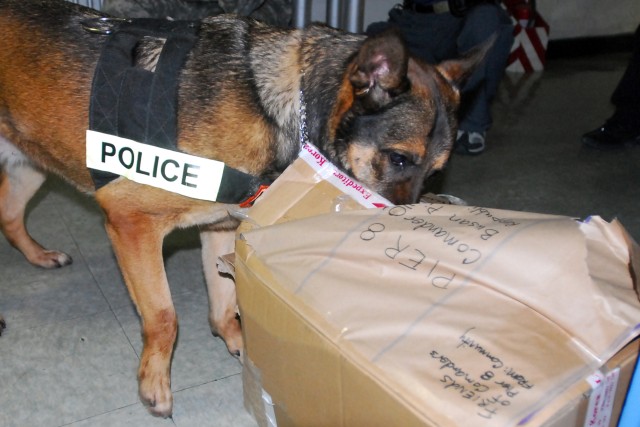
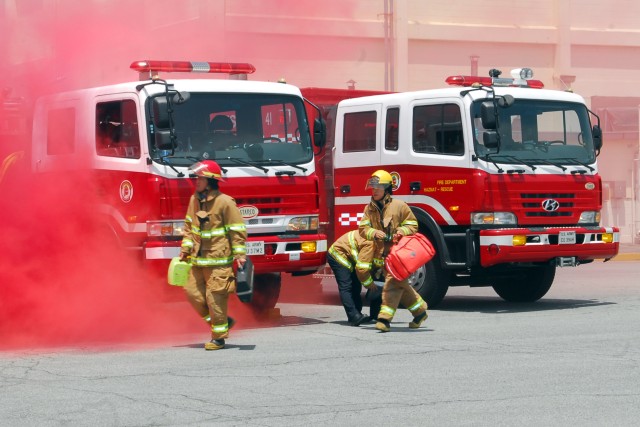
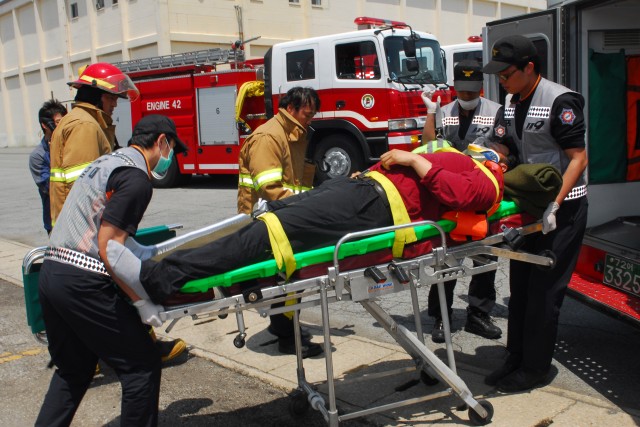
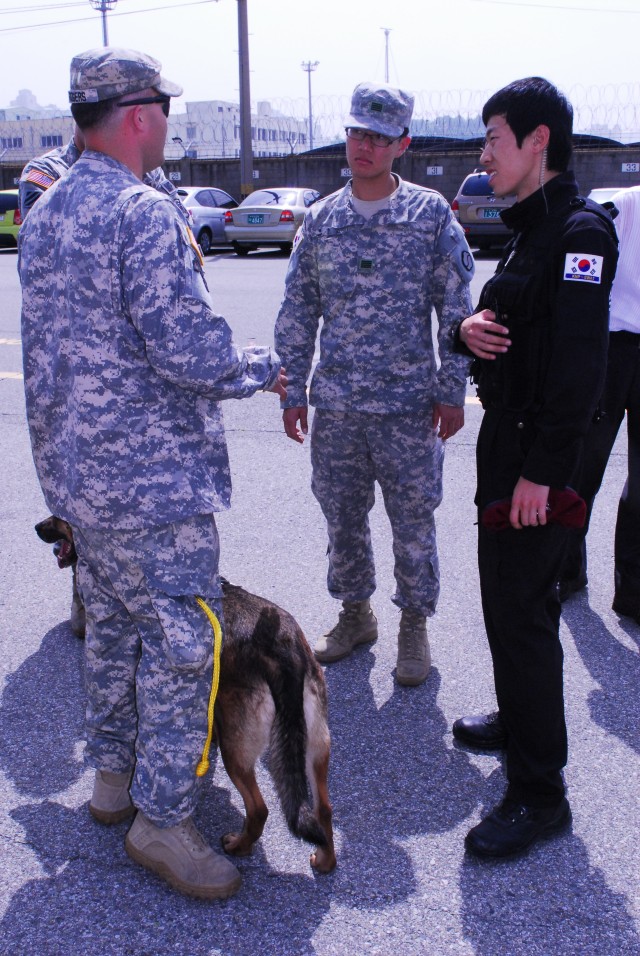
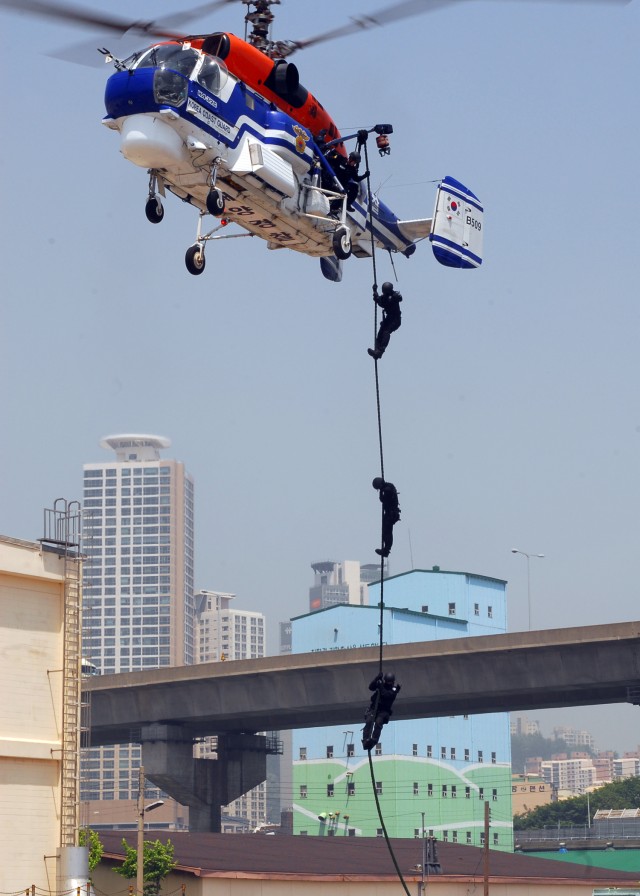

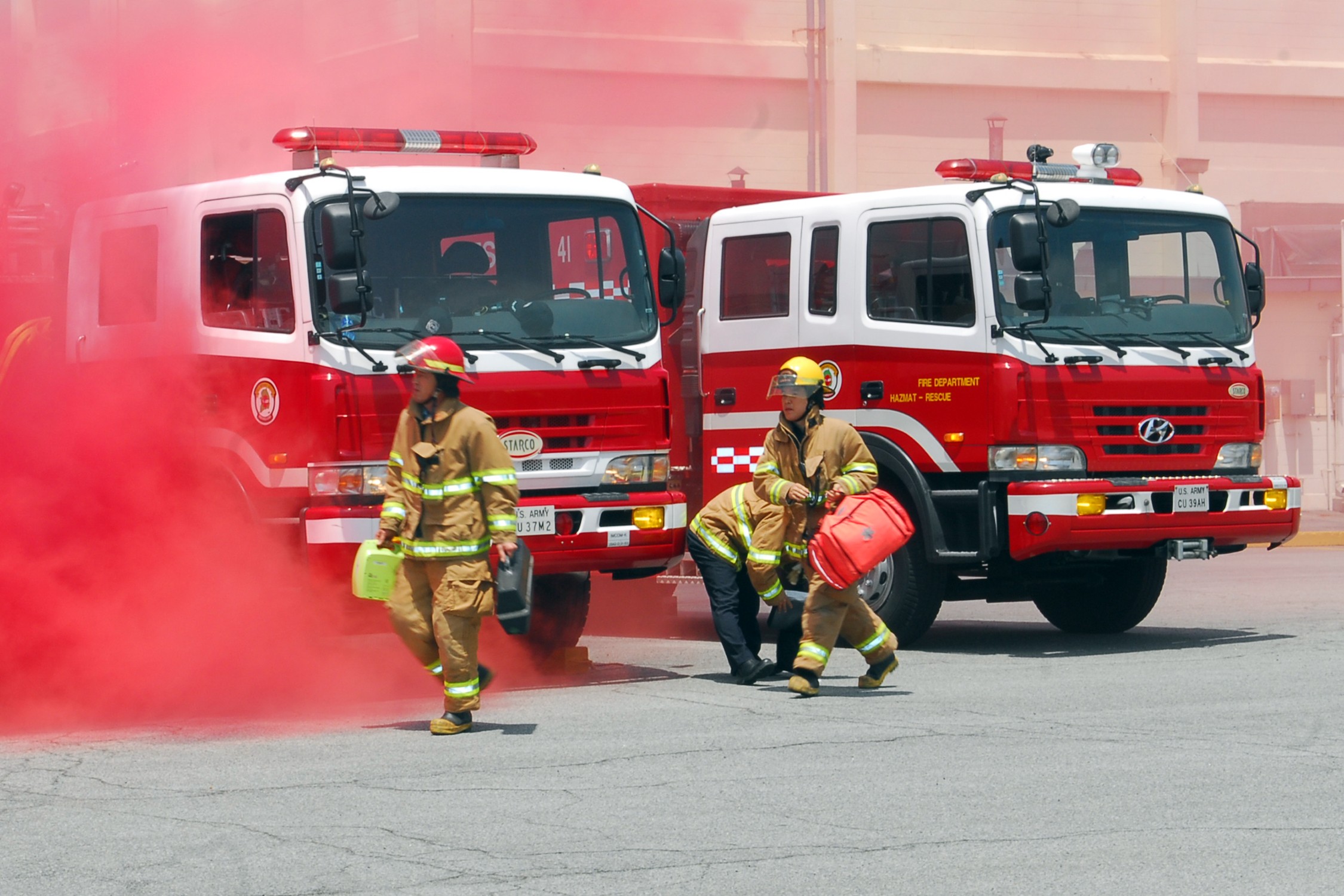
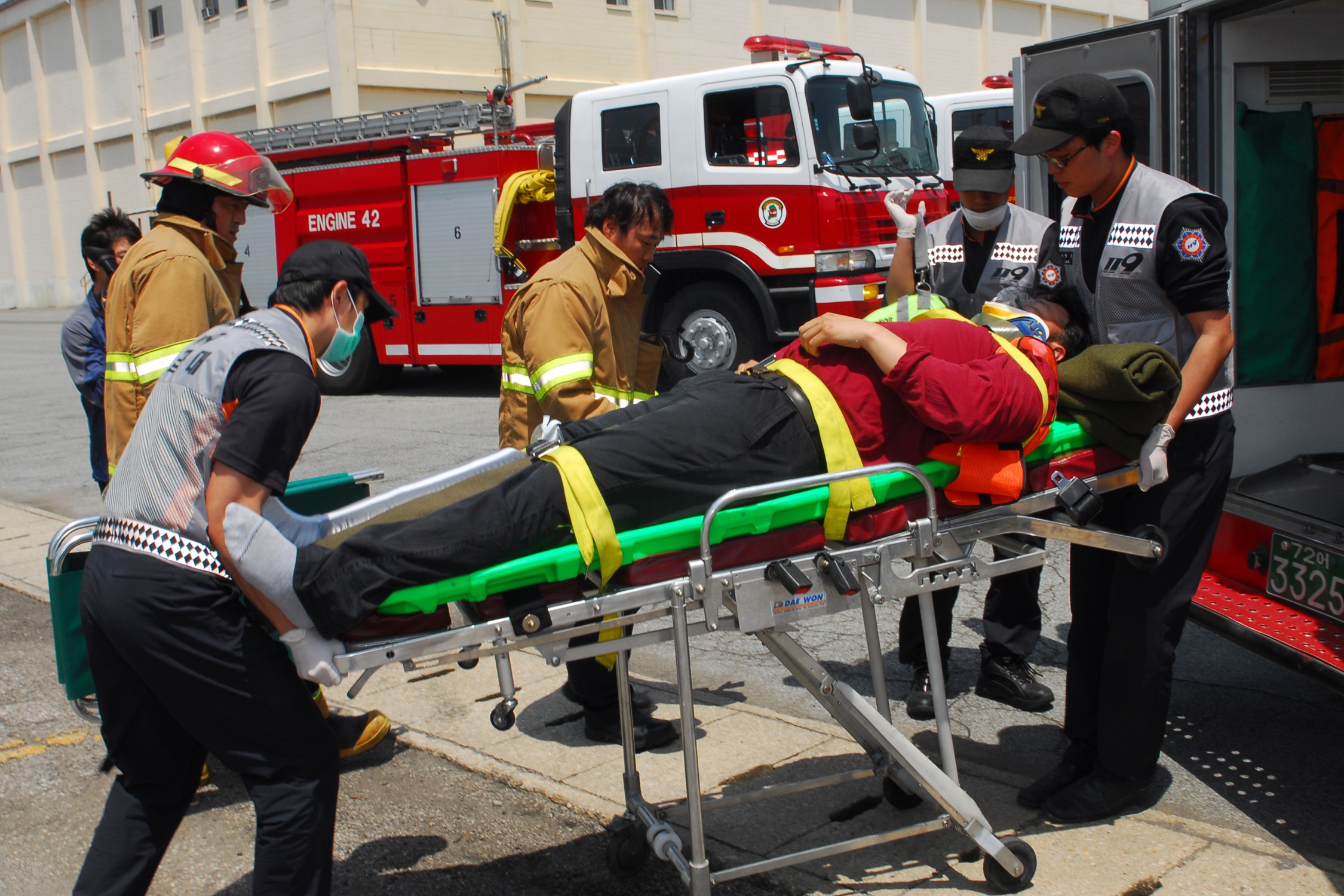
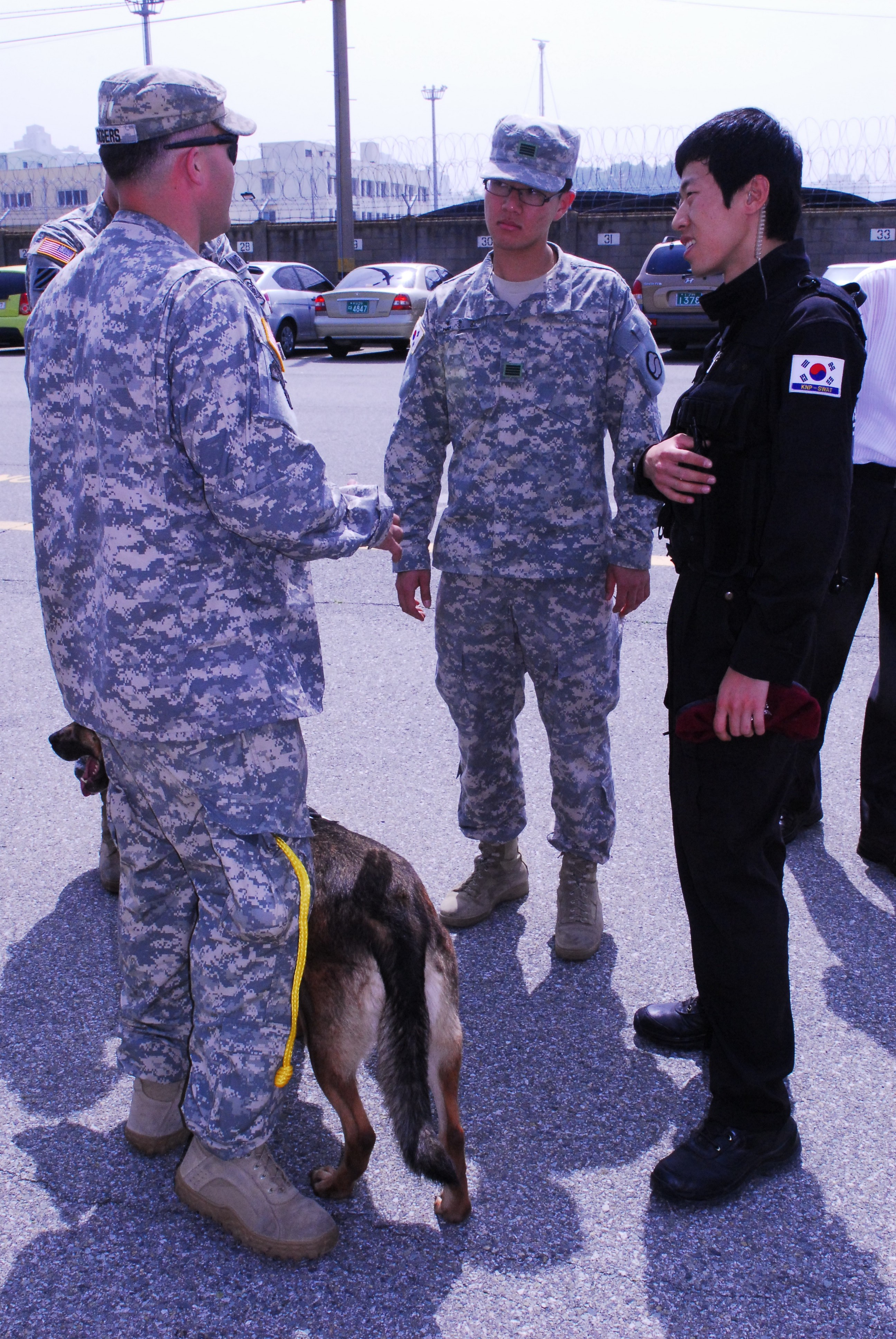

Social Sharing